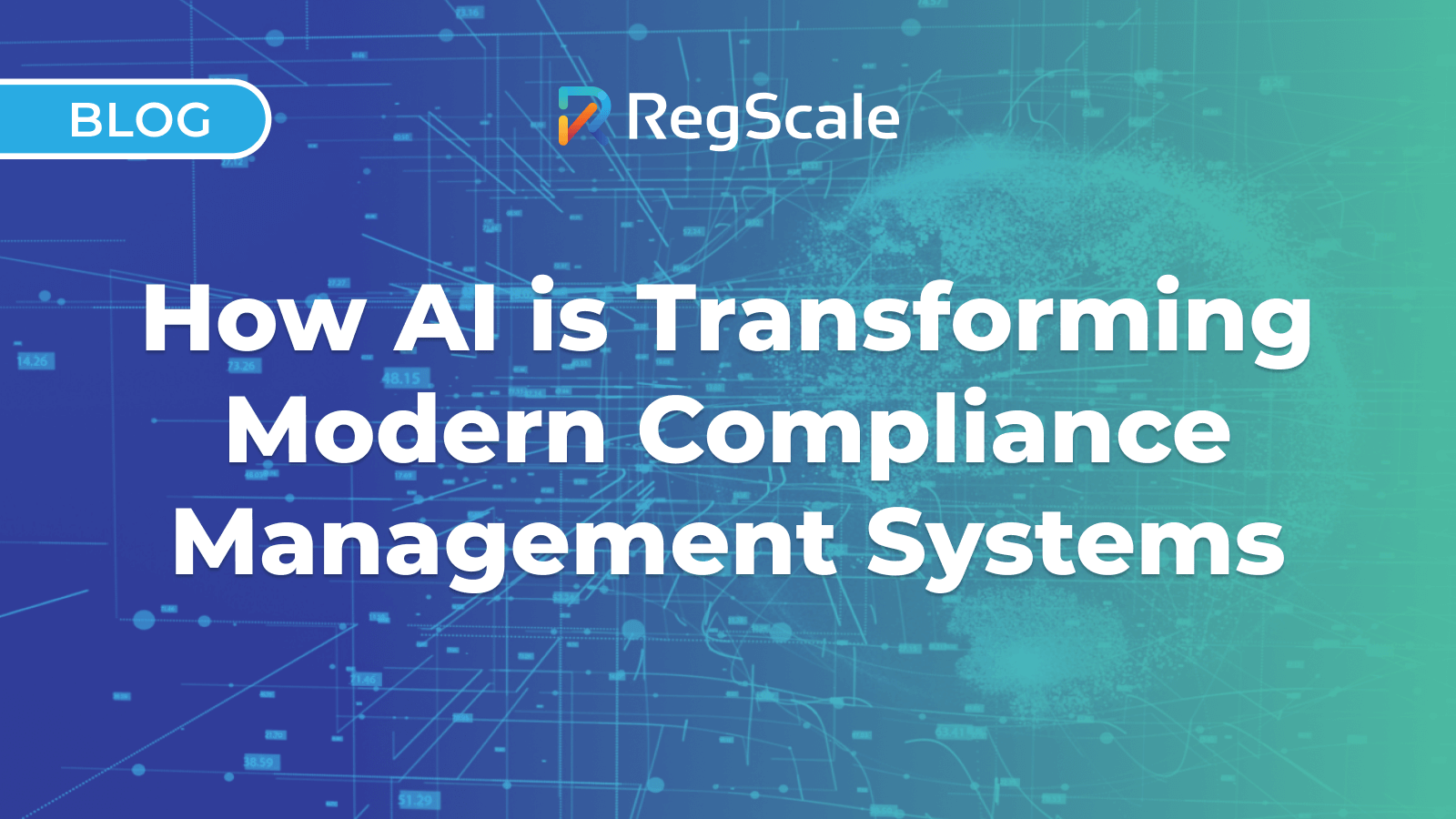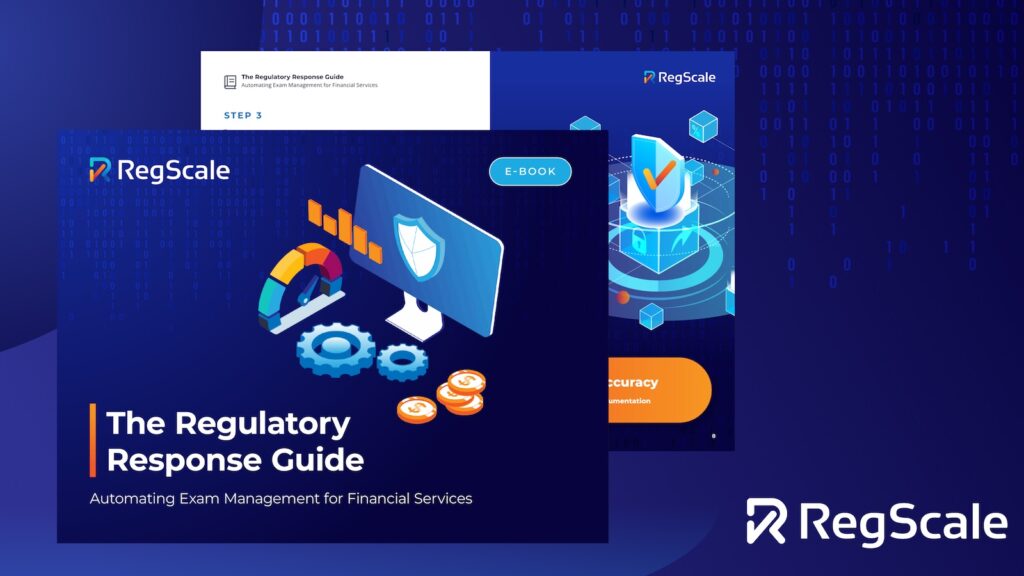How AI is Transforming Modern Compliance Management Systems

We get it — GenAI is on everyone’s minds. And with several studies showing that AI increases productivity by an average of 66%, how could it not be?
As businesses across industries harness dramatic efficiency gains from generative AI, compliance officers are asking: how can we use these same tools to transform our compliance management systems (CMS)?
So far, GRC has lagged behind other departments in GenAI adoption. (Our recent State of Continuous Controls Monitoring Report reveals that only 18% of CISOs have incorporated GenAI tools into their compliance programs.)
But that’s not for lack of potential. The convergence of AI and compliance management offers major opportunities for organizations to strengthen their regulatory compliance while also reducing their administrative burden. AI-powered solutions offer a promising alternative to traditional manual approaches — particularly in light of regulatory requirements that continue to multiply in complexity and volume.
The potential is so significant that 89% of risk, fraud & compliance professionals rated AI a “force for good” in a 2024 Thomson Reuters survey.
This guide explores how artificial intelligence is revolutionizing compliance management systems, from automating routine tasks to providing data-driven insights. We’ll examine the core components of modern compliance programs, identify key areas where AI delivers immediate value, and provide practical strategies for incorporating these technologies into your compliance function.
Whether you’re a chief compliance officer at a financial institution or managing regulatory compliance for a growing enterprise, understanding why — and how — to implement AI is essential for building an effective CMS.
Compliance Management Systems: A Brief Guide
First, some definitions.
At their core, compliance management systems (CMS) are comprehensive solutions designed to help compliance teams navigate regulatory requirements and internal controls. More than a simple checklist, a CMS brings together people, processes, policies, and technologies to ensure ongoing adherence to a vast array of rules and regulations.
For most organizations, particularly those in highly regulated industries like financial services, healthcare, and government, a CMS encompasses several critical functions:
- Policy documentation and tracking
- Regulatory change monitoring
- Risk assessment tools
- Automated reporting
- Audit trail management and internal audit prep
- Employee training and certification tracking
The best compliance management systems will transform compliance processes from a reactive burden into a strategic advantage. By centralizing their compliance efforts with an effective CMS, organizations can codify their business processes, manage compliance policies more effectively, and ensure responsible handling of compliance risks.
A well-implemented CMS also serves as a dynamic safeguard that protects an organization’s reputation, financial stability, and operational integrity. It shifts the paradigm from simply avoiding penalties to creating a comprehensive framework that anticipates and mitigates potential regulatory challenges.
For a deeper dive into how a CMS works — and how to choose the best one for your organization — check out our comprehensive guide, How To Choose the Right Compliance Management System.
How AI Can Transform Compliance Management Systems
Now that we’ve established what compliance management systems are (and why they’re so important), let’s dive into how AI can revolutionize them.
One of the most significant boosts from AI is its real-time monitoring capabilities. Unlike traditional approaches that rely on periodic compliance audits, AI-powered systems can continuously analyze transactions, communications, and activities. This allows teams to immediately identify potential compliance issues before they escalate into non-compliance.
Another major benefit of AI is in regulatory change management: traditionally one of the most labor-intensive compliance responsibilities. AI integrations can easily scan and interpret new regulations, assess whether those regulations are applicable to specific business processes, and automatically update compliance workflows. For organizations navigating complex regulatory landscapes like the EU’s General Data Protection Regulation (GDPR), ISO standards, or industry-specific requirements, this kind of automation dramatically reduces the risk of missing critical regulatory changes.
AI also offers predictive analytics, which can enhance traditional risk assessment processes. By analyzing historical compliance data alongside current operations, AI can forecast potential compliance risks and suggest preventive measures (often with just a few clicks.) This proactive approach to compliance risk management shifts the paradigm from reactive remediation to strategic prevention.
AI’s natural language processing abilities are excellent for documentation, another cornerstone of compliance activities. The right tools can review documentation for regulatory alignment, flagging potential discrepancies that might otherwise go unnoticed.
Perhaps most valuable to senior management and the board of directors is AI’s ability to generate comprehensive compliance reporting. Advanced analytics can transform raw compliance data into actionable insights, creating visualizations that highlight trends, vulnerabilities, and opportunities for strengthening the organization’s compliance posture.
Ultimately, AI can play many different roles in compliance management software. Whether it’s machine learning algorithms that detect unusual patterns associated with security vulnerabilities or privacy breaches, or a feature that drafts control statements with ease, AI tools are changing the rules for GRC.
10 Suggestions for Incorporating AI Into Your Compliance Program
Knowing that you want to incorporate AI into your compliance management systems is unfortunately not the same as effectively implementing the right tools. Concerns about security, organizational resistance, and legacy processes can all be obstacles to AI adoption.
Luckily, there are many different ways to integrate AI features into an effective compliance management program. We’ve put together ten AI suggestions to help you achieve highly automated, efficient outcomes in your GRC efforts.
- Start with a process assessment to identify your highest-volume, most repetitive compliance activities that consume significant resources. These areas typically offer the most immediate return on AI investment.
- Implement AI-powered document generation to draft necessary compliance materials in just a few clicks. The right tools can create customized procedures and reports aligned with both internal policies and regulatory requirements.
- Enhance risk assessments with AI capabilities that continuously monitor business processes, identify emerging patterns, and automatically update risk profiles based on real-time data.
- Use AI explainer tools to demystify compliance and translate complex regulations like GDPR or HIPAA into practical implementation steps.
- Implement AI-driven compliance monitoring that provides continuous surveillance rather than relying solely on periodic compliance audits, allowing for immediate identification of potential compliance issues. (While you’re at it, automate those compliance workflows to streamline tedious manual processes.)
- Adopt intelligent evidence collection and documentation using natural language processing tools.
- Generate comprehensive compliance reporting with advanced analytics that offer actionable insights for senior management and the board of directors.
- Address cybersecurity and data privacy concerns with machine learning algorithms that can detect unusual patterns around potential security vulnerabilities or breaches.
- Maintain human oversight, leaving AI to handle routine monitoring while compliance officers provide strategic direction, ethical judgment, and relationship management with regulators. Accountability among stakeholders is key to fostering a culture of compliance.
- Conduct regular independent reviews of your AI-enhanced compliance initiatives to assess how they’re performing against evolving compliance responsibilities.
RegScale’s AI-Powered Compliance Management System
We know the traditional tools don’t cut it anymore. You need intelligent solutions that transform compliance from a burden into a strategic advantage — and that’s where RegScale comes in.
Our RegML AI companion helps businesses meet compliance requirements with unprecedented efficiency, going beyond simple automation to revolutionize every stage of the compliance lifecycle. With intelligent features designed to address complex regulatory challenges, the platform offers one-click control gap assessment scorecards and a 92% reduction in effort for writing control implementations.
RegML’s AI capabilities are specifically engineered to improve key compliance tasks:
- AI Explainer: Demystifies complex control statements, providing role-specific explanations that bridge knowledge gaps and ensure clear understanding of regulatory requirements.
- AI Extractor: Automatically derives compliance documentation from existing policies, enabling organizations to get compliant faster and reuse current documentation.
- AI Author: Drafts precise control implementation statements that satisfy relevant regulations, reducing errors and improving overall documentation accuracy.
- AI Auditor: Evaluates controls on-demand, mitigating potential compliance risks by identifying gaps and recommending improvements with a single click.
By focusing on intelligent automation, RegScale empowers compliance teams to shift from manual, time-consuming processes to strategic, high-value activities. Organizations leveraging RegScale can expect to streamline their compliance management, reduce manual labor, improve documentation accuracy, maintain constant audit-readiness, and supercharge their teams.
To learn more about our AI-enabled compliance management platform, check out our comprehensive GRC resources.
Ready to get started?
Choose the path that is right for you!
Skip the line
My organization doesn’t have GRC tools yet and I am ready to start automating my compliance with continuous monitoring pipelines now.
Supercharge
My organization already has legacy compliance software, but I want to automate many of the manual processes that feed it.
